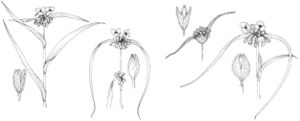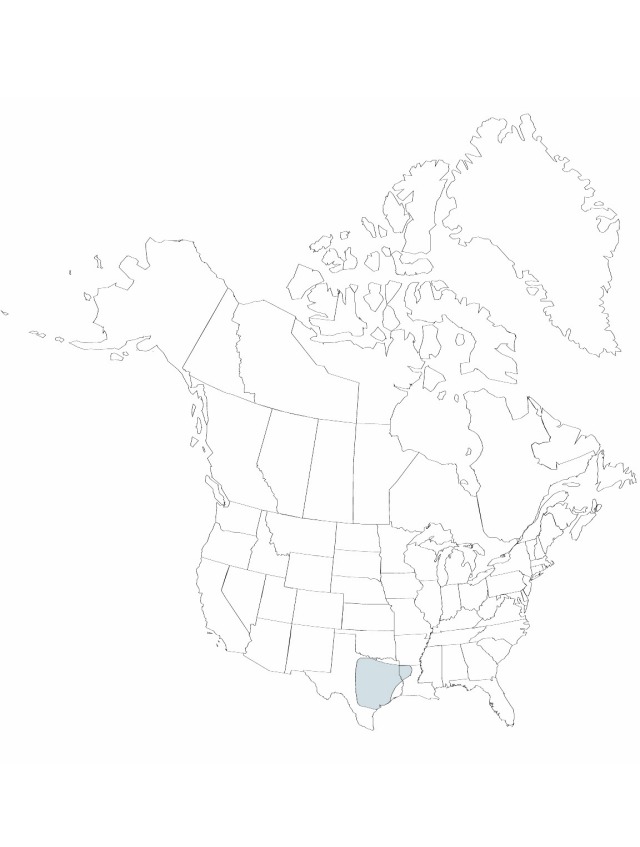Tradescantia gigantea
Contributions from the U. S. National Herbarium 5: 205. 1899.
Herbs, erect or ascending, rarely rooting at nodes. Stems 16–100 cm; proximal internodes glabrous, distal glabrous to densely eglandular-puberulent. Leaves spirally arranged, sessile (with sheaths ± saccate); blade linear-lanceolate, 10–40 × 0.5–2.5 cm (distal leaf blades equal to or narrower than sheaths when sheaths opened, flattened), glaucous, glabrous or adaxially densely and minutely eglandular-velvety. Inflorescences terminal, axillary; bracts reduced, bases saccate, minutely velvety. Flowers distinctly pedicillate; pedicels 0.9–2.8 cm, densely eglandular-puberulent; sepals 5–13 mm, densely, minutely eglandular-puberulent; petals distinct, magenta to blue or violet, broadly obovate, not clawed, 1.5–1.8 cm; stamens free; filaments bearded. Capsules 6–7 mm. Seeds 2–3 mm. 2n = 12.
Phenology: Flowering spring (Mar–May).
Habitat: Rocky limestone areas, pasturelands, weedy lots, roadsides, and along railroad tracks
Discussion
Plants of Tradescantia gigantea growing around Ruston, Louisiana may have originated from cultivated plants. They hybridize with T. ohiensis there.
Selected References
None.

